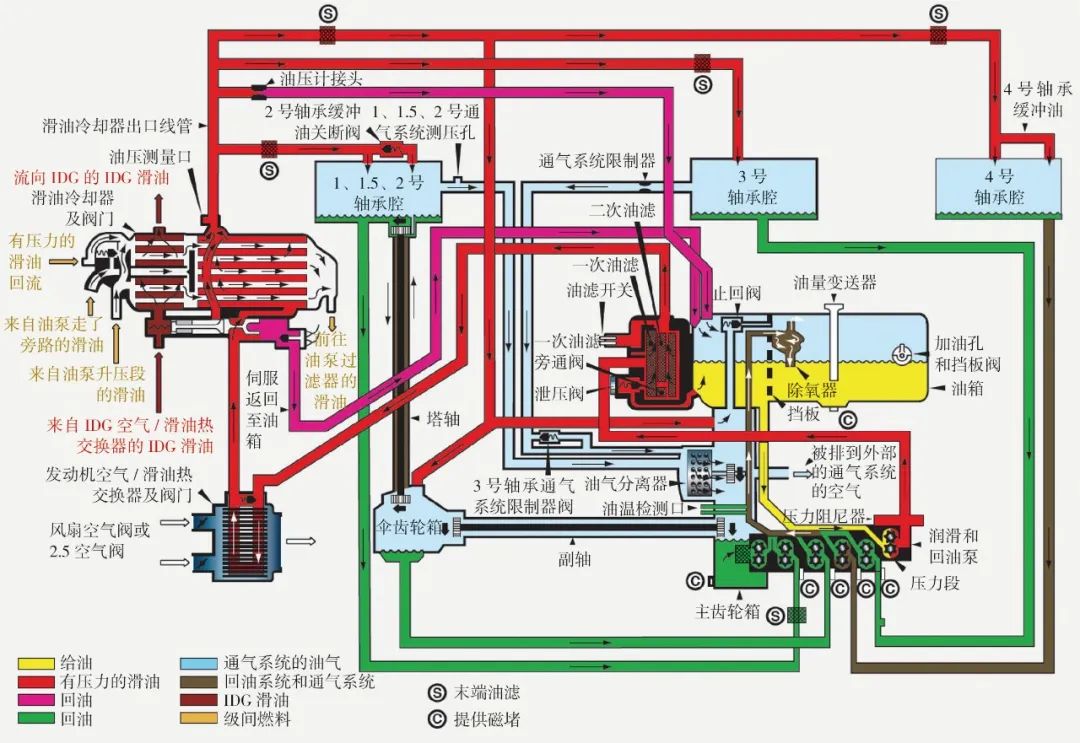Brief analysis on the development of aviation engine lubricating oil
Posted time:2022-10-29 View:436In order to ensure the reliable, safe and efficient operation of aero-engines and reduce maintenance costs, engine lubrication systems and lubricants have also been developed in response to various challenges.
The lubrication system and lubricating oil of aeroengine mainly provide lubrication, heat dissipation, cleaning and anti-corrosion protection for the engine bearings, accessory gear boxes and other parts, and also play a damping role in the vibration of the engine. The bearing of the engine supports the compressor and turbine, and the accessory gearbox drives the hydraulic pump, fuel pump and starter generator. They are all very important systems for the aircraft, which shows the importance of lubricating oil for the aircraft and the engine.
The lubricating oil is stored in the lubricating oil tank. During the engine operation, the lubricating oil pump provides continuous pressure to pump the lubricating oil through the oil supply line to the bearing cavity and the accessory gear box and its transmission device. Medium and large aircraft engines usually use pneumatic sealing to seal the bearing chamber, so the return pipe from the bearing chamber is usually a mist mixture of lubricating oil and air. The temperature of the rotor bearing in front of the combustion chamber (the compressor part) is lower than that of the rotor bearing behind the combustion chamber (the turbine part), so the operating temperature difference of the lubricating oil in these bearing chambers is higher up to 100℃. The oil/gas mixture after lubrication and the oil discharged from the accessory gear box are pumped to the heat exchange equipment for cooling, then the oil/gas separation, and finally back to the slide tank for the next cycle. The lubricating oil system can complete up to 3 cycles per minute. After the engine stops, the oil pump stops working, and the heat in the lubricating oil cannot be actively emitted, but must go through a natural cooling process, thus increasing the possibility of oxidation and carbonization.

Lubricate different types of parts (both bearings and gears) at different temperatures; The temperature of lubricating oil is constantly changing in the pipeline circulation; Coexisting with hot air most of the time; Contact different types of materials (including metal and elastic seals, etc.). These characteristics have relatively high requirements on the thermal stability, oxidation resistance, compatibility and load capacity of lubricating oil.
After decades of development and accumulation, the high thermal stability specification and high performance grade specification represented by the American military standard MIL-PRF-23699G and SAE AS5780D are designed to deal with the coking of lubricating oil and improve the compatibility of elastic seals. By improving the above two capabilities of engine oil, the engine can operate more safely and efficiently, avoid unnecessary maintenance, and reduce operating costs. Therefore, it is undoubtedly an inevitable trend in the future for users to switch to high thermal stability or high performance grade lubricating oil.
